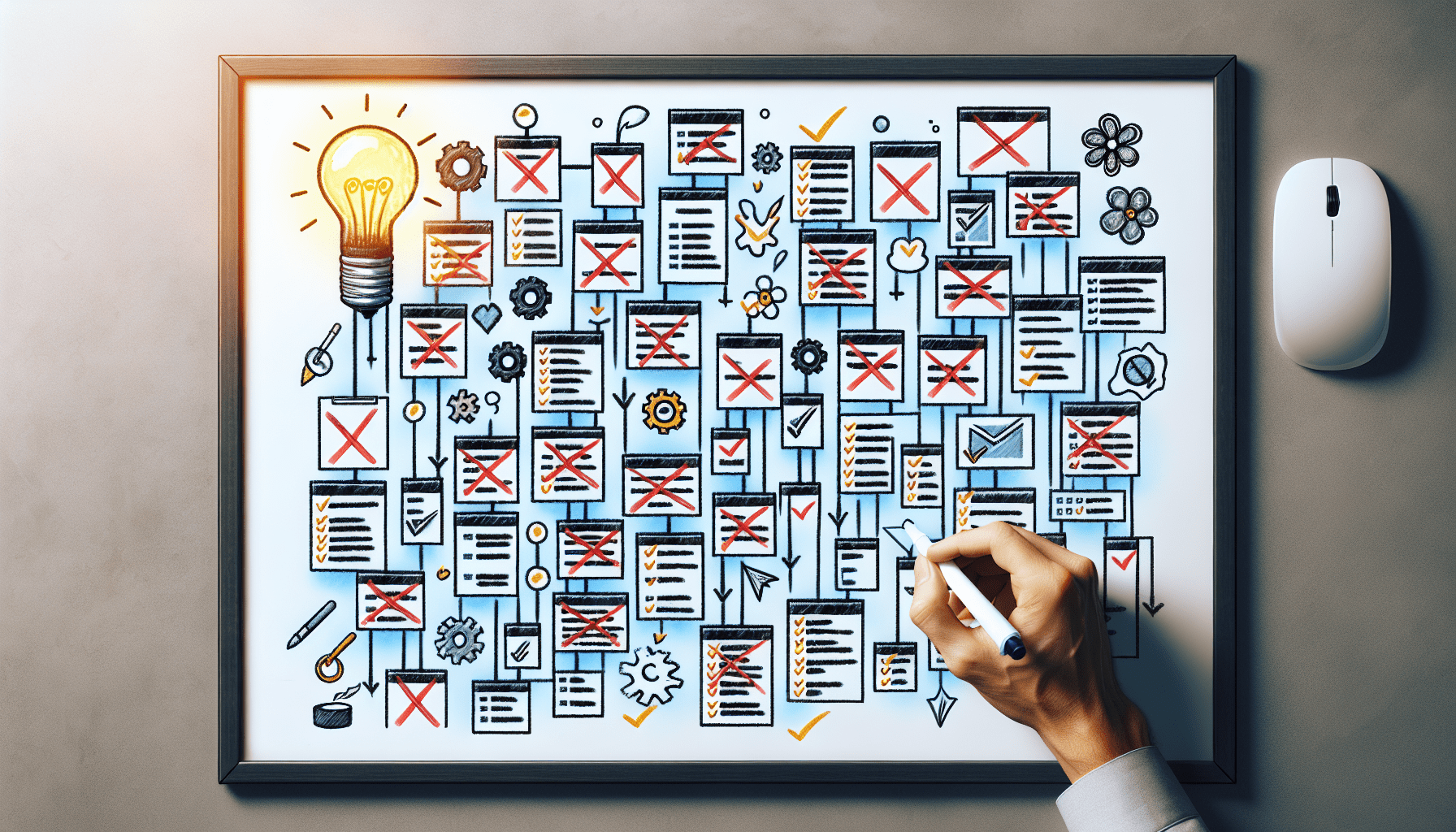
Speed Reading Techniques To Learn More In Less Time

Are you constantly finding yourself overwhelmed with a never-ending to-do list and a mountain of reading materials? Look no further, as this article will introduce you to the world of speed reading techniques. By incorporating these strategies into your daily routine, you’ll be able to devour information at a lightning-fast pace, allowing you to learn more, in less time. Say goodbye to the days of skimming through pages and struggling to retain information, and say hello to a world where knowledge is at your fingertips, waiting to be absorbed. So buckle up, because it’s time to unlock your inner speed reader and revolutionize your learning experience.
Understanding Speed Reading
What is speed reading?
Speed reading is a technique that allows you to read and comprehend written material at a significantly faster pace than traditional reading methods. It involves various strategies and exercises that improve reading speed, comprehension, and retention. By eliminating unnecessary habits and employing specific techniques, you can enhance your reading efficiency and absorb information more effectively.
The benefits of speed reading
Speed reading offers numerous benefits that can positively impact both your personal and professional life. First and foremost, it saves you time. By reading faster, you can cover more material in a shorter period, giving you the ability to acquire knowledge and information quickly. Additionally, speed reading enhances your comprehension and retention abilities, allowing you to remember and understand more of what you read. This can be particularly beneficial when studying for exams, conducting research, or keeping up with the latest industry trends. Finally, speed reading helps to improve your focus and concentration skills, which can have a positive impact on your overall productivity.
Pre-Reading Techniques
Previewing the material
Before diving into a text, it’s important to spend a few minutes previewing the material. This involves quickly scanning the contents, headings, subheadings, and any summaries or key points provided. By doing this, you get a general overview of what the text is about and can develop an initial mental framework. Previewing also helps in setting expectations and providing context for the upcoming reading.
Setting reading goals
Setting clear reading goals is essential in speed reading. It helps you stay focused and motivated throughout the reading session. Determine what you hope to achieve by the end of your reading, such as understanding the main concepts, gathering specific information, or simply reading for pleasure. Once you have established your goal, it will guide your reading approach and enable you to prioritize the most critical sections.
Organizing the reading environment
Creating an ideal reading environment plays a vital role in speed reading. Find a quiet and well-lit area where you can concentrate without distractions. Keep your reading materials organized and easily accessible to avoid wasting time searching for them. Consider using a comfortable chair and maintaining good posture to enhance your reading experience. With a well-organized and distraction-free environment, you can maximize your reading speed and comprehension.
Improving Reading Speed
Eliminating subvocalization
Subvocalization is the habit of pronouncing words silently in your mind as you read. While subvocalization is a natural part of the reading process, it significantly slows down your reading speed. By learning to reduce or eliminate this habit, you can increase your reading speed dramatically. Strategies to minimize subvocalization include focusing on visualizing concepts instead of “hearing” them in your mind, practicing with timed reading exercises, and using speed reading techniques specifically designed to address subvocalization.
Using a pacer
A pacer is a tool or technique used to guide your eyes and maintain a steady reading rhythm. It can be as simple as using your finger or a pen to underline each line of text as you read. The pacer acts as a visual cue, preventing distractions and keeping your eye movements smooth and consistent. By using a pacer, you can minimize eye regression and improve your overall reading speed.
Avoiding regression
Regression refers to the habit of jumping back to previously read text or rereading certain sections of the material. While it may seem like a way to improve comprehension, regression actually slows down your reading speed and disrupts your flow. By consciously avoiding regression and trusting in your initial understanding, you can maintain a steady pace and increase your reading speed.
Expanding peripheral vision
Peripheral vision is the ability to see objects and movement outside the direct line of sight. Expanding your peripheral vision is a technique that helps you capture more words with each glance. By training yourself to widen your field of vision and take in more information at once, you can reduce the number of eye movements required to read a sentence or paragraph. This skill is particularly useful when speed reading, as it allows you to cover more text and increase your reading speed.
Skipping irrelevant information
Not all information in a text is equally important. Skimming and selectively skipping irrelevant information can significantly improve your reading speed. Learn to identify keywords, phrases, and headings that indicate the main points of the text. By focusing on these key elements and omitting non-essential details, you can save time and increase your overall reading speed.
Enhancing Comprehension
Active reading strategies
Active reading involves engaging with the material and interacting with the text in a purposeful manner. This technique improves comprehension and retention by requiring you to question, summarize, and make connections as you read. Some active reading strategies include asking yourself questions about the material, mentally summarizing what you’ve read after each section, and making connections to prior knowledge or personal experiences. By implementing active reading strategies, you can enhance your understanding and get the most out of your reading sessions.
Annotation and highlighting techniques
Annotation and highlighting are effective methods to improve comprehension and retention. By underlining or highlighting key points, making notes in the margins, or using symbols and abbreviations to mark important information, you create a visual guide that helps you review and revisit critical concepts later. Annotation and highlighting techniques can be particularly useful when studying complex subjects or preparing for exams.
Summarizing information
Summarizing information is an essential skill in speed reading. As you read, try to mentally condense each paragraph or section into a concise summary. This forces you to extract the main ideas and key points and helps reinforce your understanding. Summarizing also aids in retention by providing a mental framework that allows you to recall essential information easily. Practice summarizing regularly, and you’ll find that your ability to comprehend and remember what you read improves significantly.
Optimizing Eye Movements
Fixations and saccades
Fixations and saccades are the two primary types of eye movements involved in reading. A fixation refers to the brief pause your eyes make on a word or group of words to process the information. Saccades are the rapid eye movements that occur when transitioning from one fixation point to the next. By understanding and optimizing these two types of eye movements, you can increase your reading speed. Techniques such as reducing fixation time, minimizing unnecessary eye movements, and ensuring smooth transitions between fixations can greatly improve your reading efficiency.
Training eye muscles for smoother movements
Just like any other muscle, the muscles responsible for eye movement can be trained to become more flexible and efficient. Practicing specific eye exercises can improve your ability to smoothly transition between fixation points and reduce eye strain. Some exercises include tracking objects or moving your eyes in different patterns, such as circles or zigzags. By strengthening your eye muscles, you can optimize your reading speed and minimize fatigue.
Focusing and Concentration
Minimizing distractions
Creating an environment free from distractions is crucial for maintaining focus and concentration while speed reading. Minimize external disruptions by finding a quiet space, turning off notifications, and removing any potential sources of noise or interruptions. Additionally, manage internal distractions by clearing your mind, setting aside any unrelated thoughts, and maintaining a positive mindset. By minimizing distractions, you can fully engage with the material and maximize your reading efficiency.
Implementing concentration exercises
Improving your concentration skills can significantly enhance your speed reading abilities. Simple exercises such as meditation, deep breathing techniques, and mindful reading can help you develop focus and reduce mental fatigue. These exercises train your brain to concentrate on the task at hand, enabling you to absorb information more efficiently and increase your reading speed.
Speed Reading Apps and Software
Popular speed reading apps
There are several speed reading apps available that can assist in improving your reading speed and comprehension. Some popular options include Spreeder, ReadMe!, and Acceleread. These apps often offer features such as adjustable reading speeds, customizable reading environments, and various exercises to enhance reading skills. By incorporating speed reading apps into your daily reading routine, you can benefit from guided practice and real-time progress tracking.
Features to look for in speed reading software
When selecting speed reading software, consider the features that best suit your needs and learning style. Look for programs that offer adjustable reading speeds, customizable text formatting, and opportunities for timed reading exercises. Additionally, choose software that provides exercises to address specific areas of improvement, such as subvocalization or eye movement optimization. The ability to track your progress and receive feedback is also beneficial for monitoring your development and staying motivated.
Speed Reading Courses
Online speed reading courses
For those seeking more comprehensive speed reading training, online courses are a great option. These courses provide structured lessons, tutorials, and practice exercises to help you develop and refine your speed reading skills. Some popular online speed reading courses include those offered by Iris Reading, Speed Reading Lounge, and Rev It Up Reading. By enrolling in an online course, you gain access to expert guidance and a supportive learning community, both of which can facilitate your speed reading journey.
Benefits of enrolling in a speed reading course
Enrolling in a speed reading course offers numerous benefits beyond self-learning. Courses provide structured curricula, ensuring you progress through the material effectively. Experienced instructors can guide you through various techniques, answer questions, and provide personalized feedback. Moreover, the presence of a supportive community of fellow learners can offer motivation, accountability, and a platform for sharing experiences. By investing in a speed reading course, you equip yourself with the tools and support needed to reach your reading goals efficiently.
Common Mistakes to Avoid
Reading with low motivation
Maintaining high motivation is essential to successful speed reading. It’s easy to lose interest or become discouraged when faced with challenging texts or long reading sessions. However, reading with low motivation can hinder your progress and lead to subpar results. Find ways to stay motivated, such as setting clear goals, rewarding yourself for milestones achieved, or finding topics that genuinely interest you. By maintaining a positive mindset and approaching reading with enthusiasm, you enhance your speed reading experience.
Skipping important details
While speed reading prioritizes speed and efficiency, it’s important not to sacrifice comprehension by skipping or glossing over vital details. Avoid falling into the trap of focusing solely on speed and neglecting the understanding of the material. By employing active reading strategies, such as summarizing, annotating, and asking questions, you can ensure that you extract and retain the crucial information while maintaining a swift reading pace.
Not adequately practicing speed reading techniques
Speed reading, like any skill, requires practice to improve. Consistency is key in developing and honing your speed reading abilities. Merely learning the techniques is not enough; you must actively apply them regularly to see progress. Dedicate regular time to reading and incorporate speed reading strategies into your sessions. By practicing consistently, you reinforce the techniques, increase your reading speed, and enhance your comprehension and retention skills.
Building a Reading Habit
Creating a reading schedule
To fully benefit from speed reading, it is crucial to establish a regular reading schedule. Set aside specific times during the day when you can dedicate uninterrupted time to reading. Whether it’s in the morning, during breaks, or before bed, creating a consistent reading routine helps train your mind to focus and improves reading efficiency. Prioritize reading in your daily schedule, and over time, it will become a natural and enjoyable habit.
Diversifying reading materials
Expanding your reading horizons by exploring diverse materials is essential for personal and intellectual growth. Avoid limiting yourself to specific genres or subjects and explore a wide range of materials, including non-fiction, fiction, biographies, and articles on various topics. By diversifying your reading materials, you expose your mind to different writing styles, viewpoints, and perspectives, enhancing your overall reading experience.
Setting reading goals
Setting reading goals is not just important in speed reading; it is also crucial for fostering a reading habit. By establishing specific goals, such as reading a certain number of books per month or completing a specific reading challenge, you create a sense of purpose and direction. Setting realistic and attainable goals keeps you motivated, engaged, and ensures a continuous progression in your reading skills and knowledge.
In conclusion, speed reading is a valuable skill that can significantly enhance your reading efficiency and comprehension. By employing pre-reading techniques, improving reading speed, enhancing comprehension, optimizing eye movements, and fostering focus and concentration, you can become a more efficient reader. Additionally, utilizing speed reading apps and software, enrolling in speed reading courses, and avoiding common mistakes will further support your speed reading journey. By building a regular reading habit, diversifying your reading materials, and setting reading goals, you can cultivate a love for reading and continue to expand your knowledge and horizons. So embrace speed reading, and unlock the ability to learn more in less time!





















